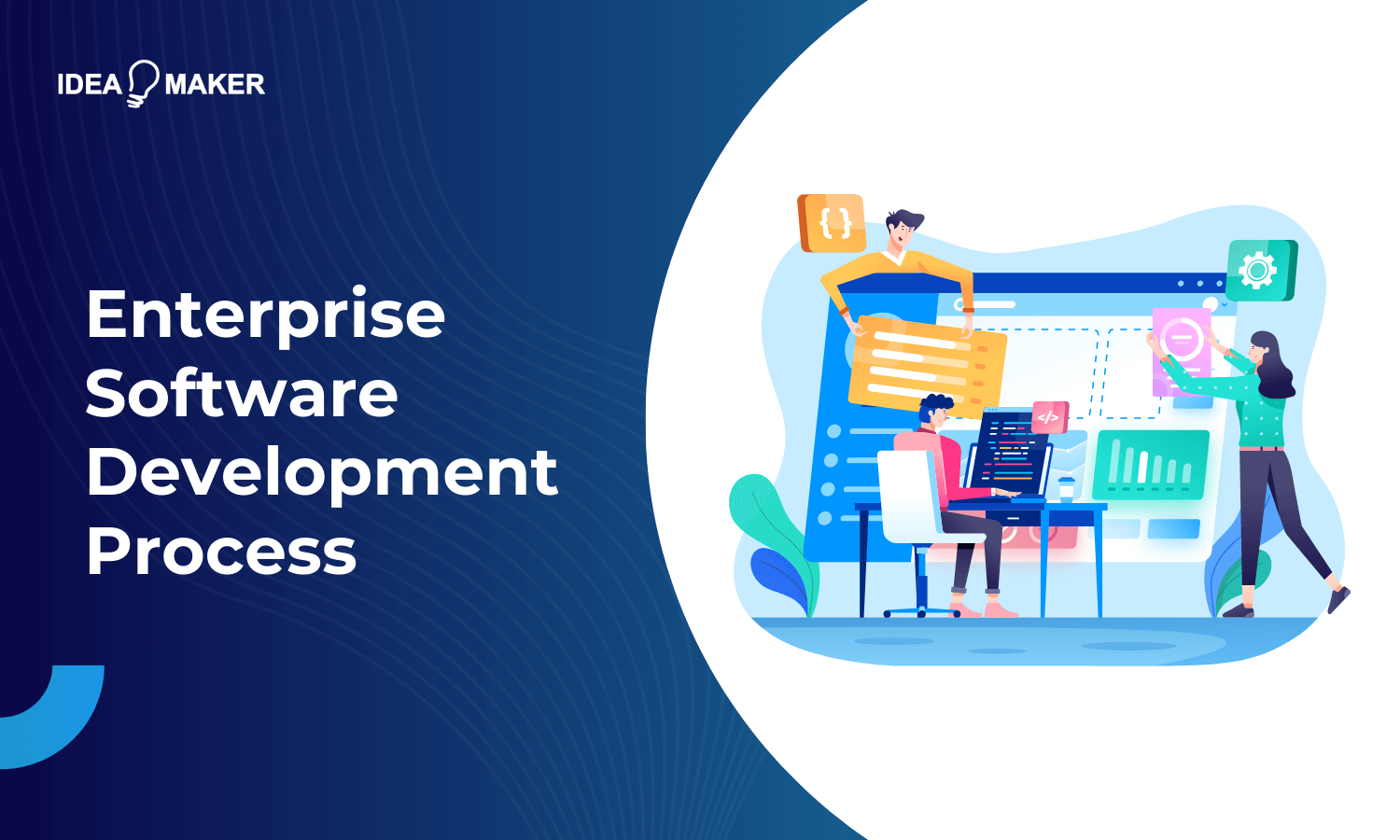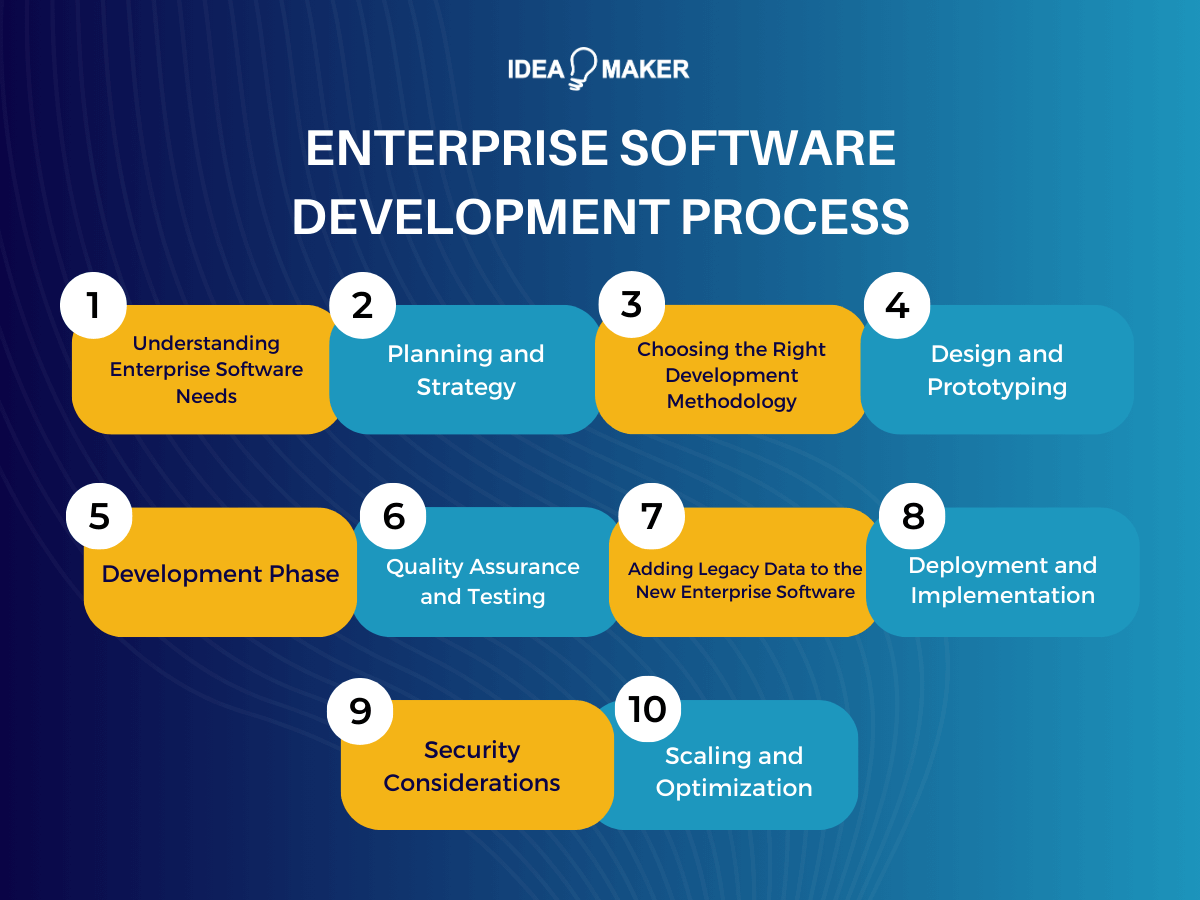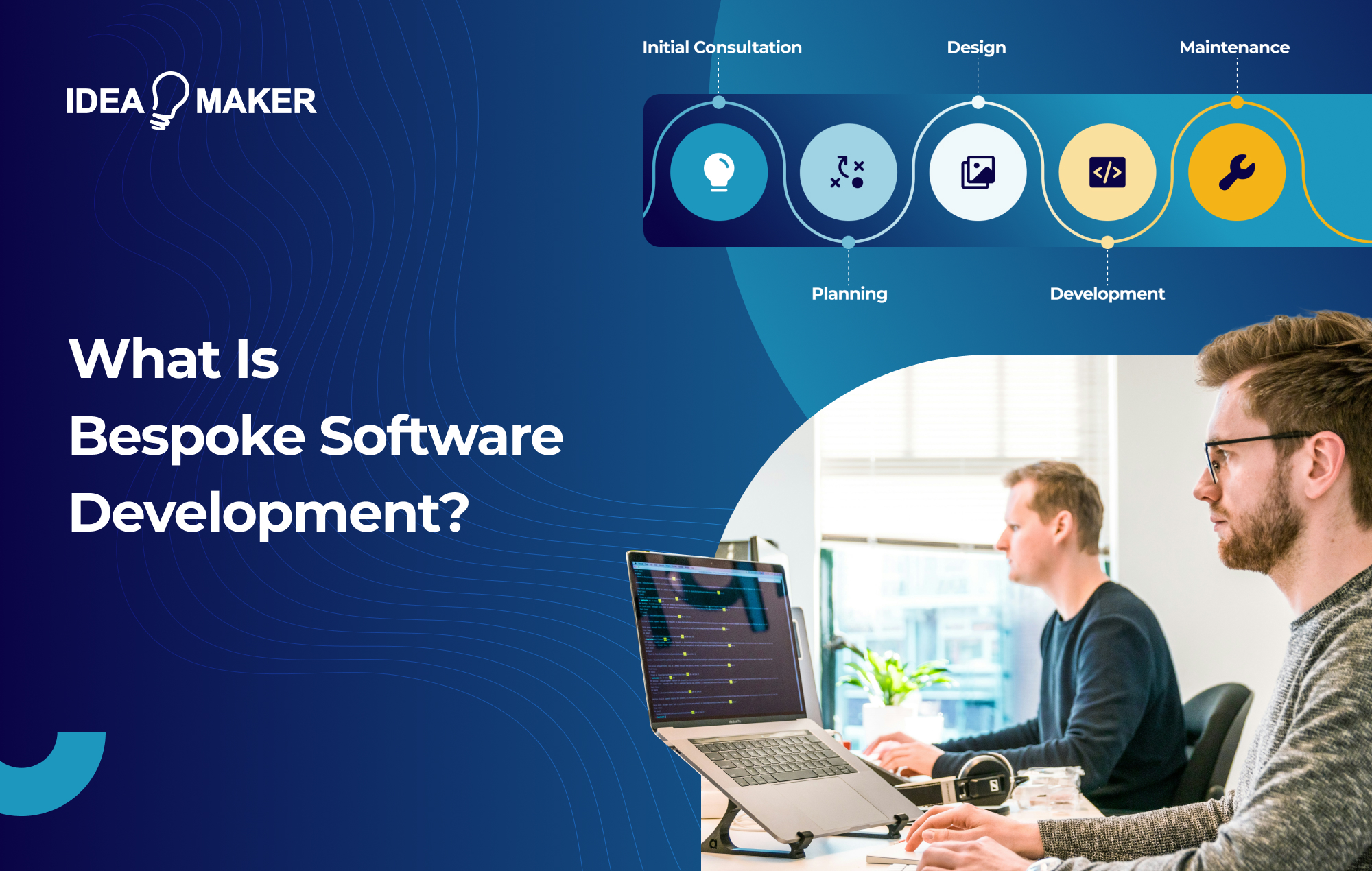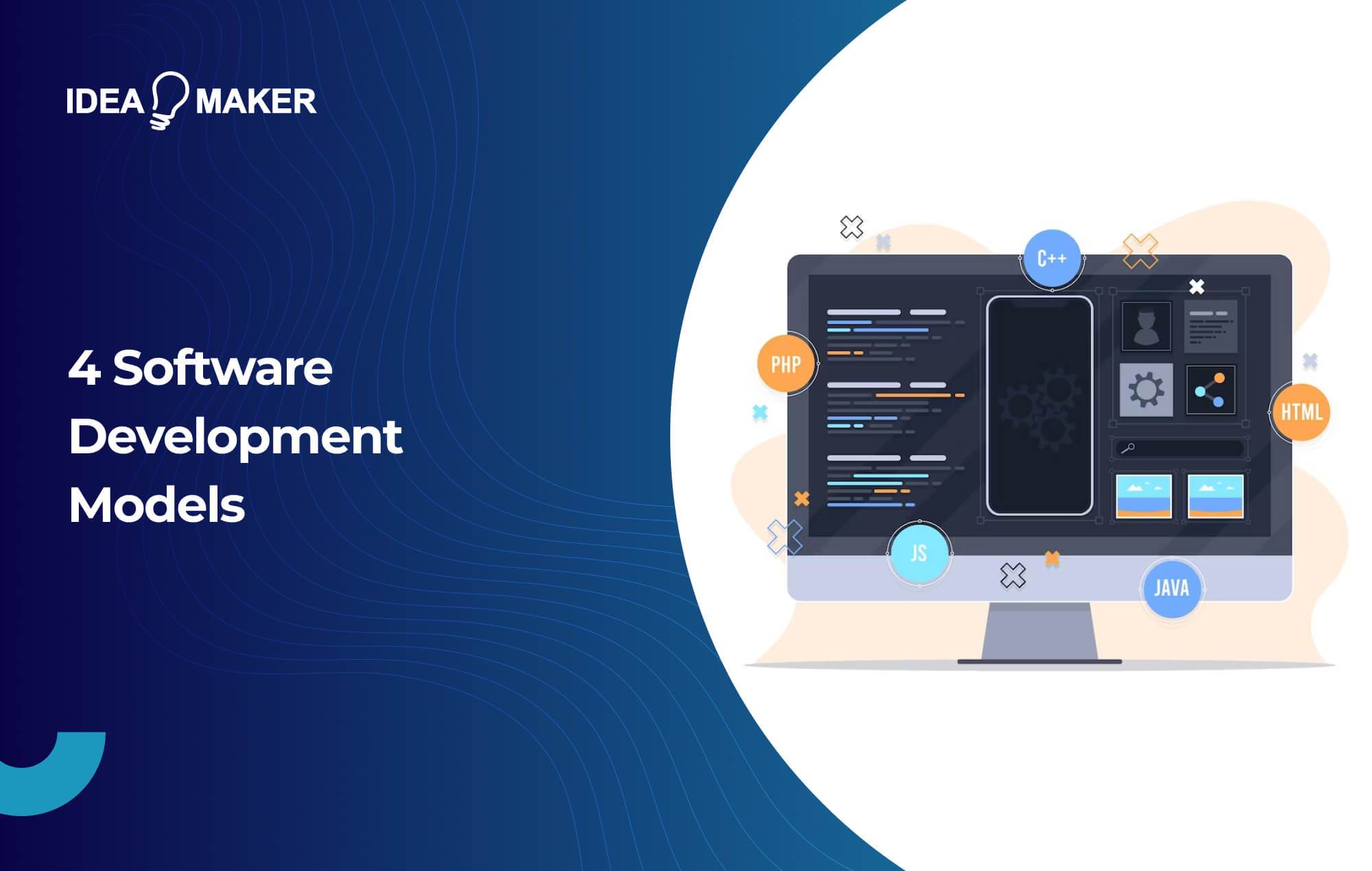Table of Contents
With more and more businesses leveraging cutting-edge technology to drive growth and innovation, the demand for sophisticated enterprise software solutions has never been higher. This is thanks to the all-encompassing nature of enterprise applications, which are intricately woven into the fabric of your business to support all critical functions.
However, when it comes to enterprise software development, there are some challenges that you should be aware of, especially in terms of changing business requirements and security risks. As a result, a delicate balance of technical expertise, strategic foresight, and a deep understanding of organizational dynamics is crucial for a successful development.
Fortunately, this article offers a step-by-step approach to navigating the complexities of enterprise software development. From defining project scope and selecting the right development methodology to designing intuitive user interfaces, we guide you through each stage of the process, ensuring your business can unlock the full potential of your enterprise software.
What Is Enterprise Software Development and How Is It Different From Other Software?
Enterprise software development refers to the creation of an application specifically for business use, such as project management and accounting software. Unlike other forms of development, enterprise applications are built with business processes in mind, offering unique functionality and impressive capabilities.
For example, with enterprise software, your company can integrate business-specific scheduling features, lead management tools, and enhanced security considerations. Enterprise software also boasts high levels of scalability, ensuring your solution can grow alongside your business.
Yet, despite its many benefits, enterprise software does pose various challenges related to industry standards and regulations, advanced security needs, and, often, high initial development costs.
Of course, other types of applications have disadvantages, too, making the positive side of enterprise software stand out. In other words, the benefits of enterprise software far outweigh the negatives.
Enterprise Software Development Process
The software development process behind enterprise applications helps to facilitate smooth development that elevates business functionality. While it shares many features of other software development processes, each stage is approached differently as a result of the highly demanding nature of enterprise software.
Let’s now take an in-depth look at the enterprise software development process, so you can get a better understanding of what it takes to build an exceptional enterprise application.
-
Understanding Enterprise Software Needs
The process begins with understanding your enterprise software needs. This means identifying areas of your business in which enterprise software can help. For example, if you’re struggling to keep on top of lead management and are inundated with requests, you might consider building a project management application tailored to lead organization.
While understanding your needs might initially seem simple, it’s important to dedicate significant time to this process, as you may identify more requirements than you initially thought. A deep understanding of your needs will also help guide your future development, making the entire process smoother.
-
Planning and Strategy
Once you’ve determined what your enterprise application will be used for, you can then begin the planning and strategy phase. This involves outlining development steps, creating timelines, reviewing available resources, and determining your overall budget. If you’re working with a development team, they will help you outline these considerations if needed.
Creating a project plan and strategy is otherwise known as outlining a project spec. This is a requirement for any development project beyond simple static websites. Therefore, it’s essential that you are meticulous in your outline and include all necessary information about your project, your business, and software requirements.
-
Choosing the Right Development Methodology
Once you’ve created a comprehensive plan and strategy, you’ll need to select a development methodology. When working with an external development team, they will already have their preferred methodologies, so it’s important to find out what they use and if it aligns with your needs. There are several development methodologies from which to choose:
- Agile: Agile methodology is an iterative approach to software development that prioritizes adaptability and collaboration among cross-functional teams. This model focuses on delivering small, incremental releases frequently, based on customer feedback.
- Waterfall: Waterfall methodology is a sequential design process in which progress is seen as flowing steadily downwards through defined phases, from conception to deployment. Because each phase is dependent on the deliverables of the previous one, this methodology is often suitable for projects with well-understood requirements and little expected change.
- DevOps: DevOps is a software development approach that emphasizes collaboration, integration, automation, and communication between software developers and IT operations teams. Its main aim is to deliver high-quality software products more rapidly and reliably.
Each of the above development methodologies are excellent choices for enterprise software development. However, generally speaking, Agile offers the best approach thanks to its flexible and scalable nature, allowing you to swiftly deal with bugs and feature additions.
-
Design and Prototyping
After selecting an appropriate development methodology, you should then set about designing and prototyping your software. For this, you’ll need to use a professional design tool with prototyping capabilities. At Idea Maker, we use Figma and recommend that you do the same.
When creating your design, you should take care to consider proper usability principles. This means considering how users are likely to interact with your software and implementing design elements accordingly. It’s also important to ensure that no interactive elements are covered or hindered by aesthetic design elements.
Generally, it’s good practice to create a wireframe on your software first. This is a barebones, interactive outline that depicts interactive elements and users flows. You can then flesh your wireframe out with actual, visual design.
-
Development Phase
After you’ve created a design and user flow that adheres to proper usability principles and outlines your desired functionality, you can then begin the development phase. To facilitate a smooth development process, it’s crucial to integrate modern development frameworks and utilize developer collaboration and management tools. You should also be sure to follow these development practices:
- Utilizing Version Control: Version control, such as Git, tracks changes made to code, allowing developers to collaborate effectively, revert to previous versions if needed, and maintain a cohesive codebase across team members.
- Conducting Peer Reviews: Peer reviews involve team members critically examining each other’s code to identify bugs, ensure adherence to coding standards, share knowledge, and improve overall code quality before it is merged into the main codebase.
- Feedback Loops: Feedback loops involve gathering input from stakeholders, users, and team members throughout the development process to validate assumptions, refine features, and ensure the final product meets expectations. This practice ultimately fosters continuous improvement.
- Documentation: Documentation involves creating comprehensive guides, manuals, and explanations for code, processes, and systems. This enables easier onboarding for new team members, facilitates maintenance, and ensures knowledge transfer within the team.
-
Quality Assurance and Testing
Quality assurance is essential in building robust enterprise applications poised for long-term use and success. However, testing your enterprise software thoroughly is easier said than done, as it’s not always as simple as clicking through features. Instead, you’ll need to implement a logical and effective testing strategy.
Beta testing is a popular and recommended method of testing. This is where you release your software to a small number of vetted users and allow them to use the software as intended. While using your software, users are tasked with identifying any usability issues and bugs, as well as providing feedback. You are then able to update your software accordingly before launch.
-
Adding Legacy Data to the New Enterprise Software
If you have an existing enterprise system, you’ll want to transfer your existing historical data to your new enterprise application. Transferring this information will help your new application run smoothly and allow your business operations to continue with minimal friction during the hand-over period.
However, it’s essential that your legacy data is transferred correctly, otherwise you risk losing your data or failing to transfer it properly. As a result, you will need to be mindful of potential data incompatibilities and security concerns such as hacking and data loss. To remedy these issues, you should ensure that you follow secure practices and build your new system with legacy data in mind.
-
Deployment and Implementation
Deploying and implementing enterprise software requires meticulous planning and coordination to ensure a smooth transition and minimal disruption to business operations. For best results, you should begin by defining clear deployment objectives and timelines, considering factors like user training and support.
During implementation, you will also need to closely monitor progress, address any issues promptly, and provide adequate support to end-users. Additionally, documenting processes and procedures for future reference and continuous improvement will help ensure that the deployed software aligns seamlessly with organizational goals and requirements.
-
Security Considerations
Security is paramount in enterprise software development to protect sensitive data and mitigate potential risks. Consequently, you will need to conduct a comprehensive risk assessment to identify vulnerabilities and threats, and implement robust security measures accordingly. This includes implementing encryption, access controls, and authentication mechanisms to safeguard data integrity and confidentiality.
Regular security audits and penetration testing should also be conducted to proactively identify and address security loopholes. Additionally, it’s imperative to educate employees about security best practices and enforce strict compliance with regulations such as GDPR and HIPAA. By prioritizing security considerations throughout the development lifecycle, you can build trust with customers and safeguard your reputation.
-
Scaling and Optimization
As enterprise software usage grows, scalability and optimization become critical considerations to ensure seamless performance and efficiency. This means it’s vital to evaluate scalability requirements early in the development process and design the software architecture to accommodate future growth seamlessly. Implementing scalable infrastructure solutions like cloud computing and containerization will also help handle increased workloads effectively.
You should continuously monitor system performance and identify bottlenecks, optimizing code and resources as needed. Embracing automation, for example, is an excellent way to streamline processes and reduce manual intervention, enabling the software to scale gracefully. Regularly reviewing and updating scalability strategies to adapt to evolving business needs and technological advancements will also ensure that your enterprise software remains agile and responsive.
Key Takeaways: Enterprise Software Development Process
When it comes to enterprise software development, following a robust process is key to success. The planning stage is especially important in facilitating a smooth development, so extra care should be taken when strategizing. However, as businesses are different, certain aspects of the above development process may be more prominent than others.
So, if you’re ready to take the plunge and elevate your business with an expertly crafted enterprise application, look no further than Idea Maker. We have a team of experienced enterprise software developers dedicated to making your software a success. Schedule a free consultation with us today to get started.














